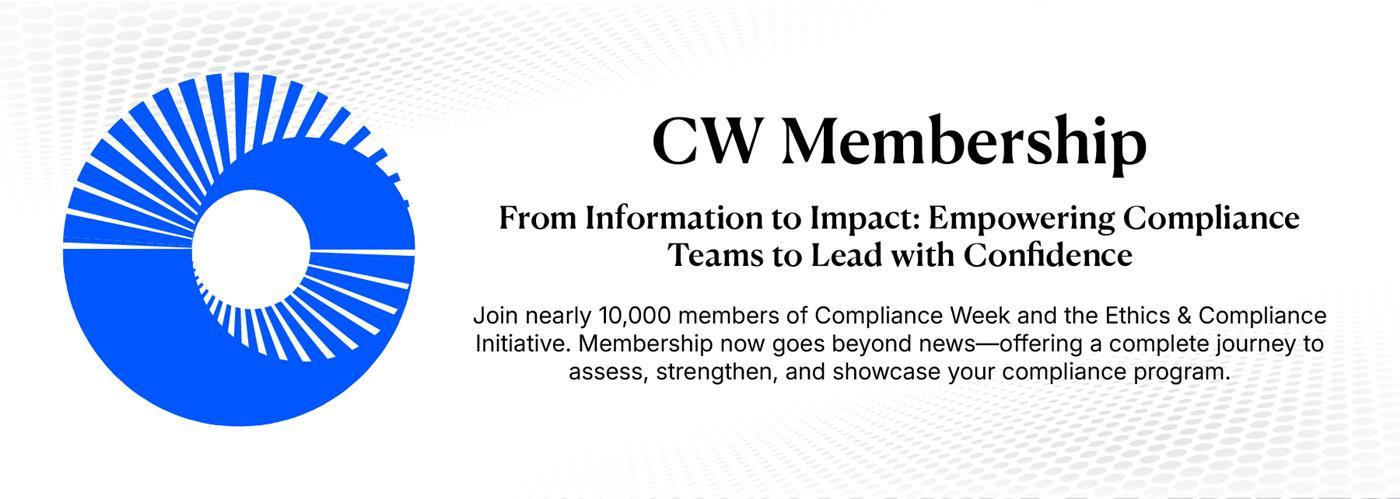- Home
-
News
- Back to parent navigation item
- News
- National Compliance Officer Day 2025
- Accounting & Auditing
- AI
- AML
- Anti-Bribery
- Best Practices
- Boards & Shareholders
- Cryptocurrency and Digital Assets
- Culture
- ESG/Social Responsibility
- Ethics & Culture
- Europe
- Financial Services
- Internal Controls
- Regulatory Enforcement
- Regulatory Policy
- Risk Management
- Sanctions
- Surveys & Benchmarking
- Supply Chain
- Third Party Risk
- Whistleblowers
- Opinion
- Benchmarking
- Certification
- Events
- Research
- Awards
-
CW Connect
- Back to parent navigation item
- CW Connect
- Sign In
- Apply
- Membership
Ask a CCO: Compliance’s role in D&I efforts
By Compliance Week2020-09-29T18:24:00

We asked nine prominent chief compliance officers what they can do or are doing to create a more progressive workplace.
THIS IS MEMBERS-ONLY CONTENT
You are not logged in and do not have access to members-only content.
If you are already a registered user or a member, SIGN IN now.
Related articles
-
 Article
ArticleAssessing 2020: Lessons learned for the financial crime landscape
2020-12-29T21:49:00Z By James Thomas, International Compliance Association
This year has been one most of us would like to forget. As we look toward 2021, nevertheless, it is worth considering lessons learned over the last 12 months and (where possible) drawing on any positives that have come to light regarding the financial crime landscape.
-
 Premium
PremiumSix veteran CCOs, 5 questions: Improving your compliance training
2020-02-13T15:50:00Z By Compliance Week
Six senior compliance practitioners offer their perspectives on what makes for an effective training program and share tips and guidance for companies looking to enhance their education initiatives.
-
 Premium
PremiumFour veteran CCOs, 5 questions: The evolution of compliance
2020-01-06T19:31:00Z By Compliance Week
With a combined 64 years experience in compliance, these four chief compliance officers reflect on how the profession has evolved over the past decade-plus and what challenges lie ahead.
More from Opinion
-
 Article
ArticleWhat 2025’s AI mishaps should teach compliance in 2026
2025-12-29T12:00:00Z By Ruth Prickett
If 2025 was the year generative AI took off in organizations in every sector, it was also the year we saw increasing examples of the risks of AI mishaps.
-
 Opinion
OpinionBuilding resilient teams in cyberdefense
2025-12-29T12:00:00Z By Timothy Miller, CW guest columnist
The stress on cyberdefense teams can be accurately described as a form of chronic occupational trauma stemming from several unique pressures. But there are ways to build a culture that combats these pressures.
-
 Opinion
OpinionThe invisible cost of digital defense on mental health
2025-12-26T12:00:00Z By By Timothy Miller, CW guest columnist
Cybersecurity professionals, particularly those in leadership roles, often face immense pressure and stress due to the constant threat of cyberattacks.
- Terms and Conditions
- Privacy Policy
- Do Not Sell My Info
- © 2025 Compliance Week
Site powered by Webvision Cloud






